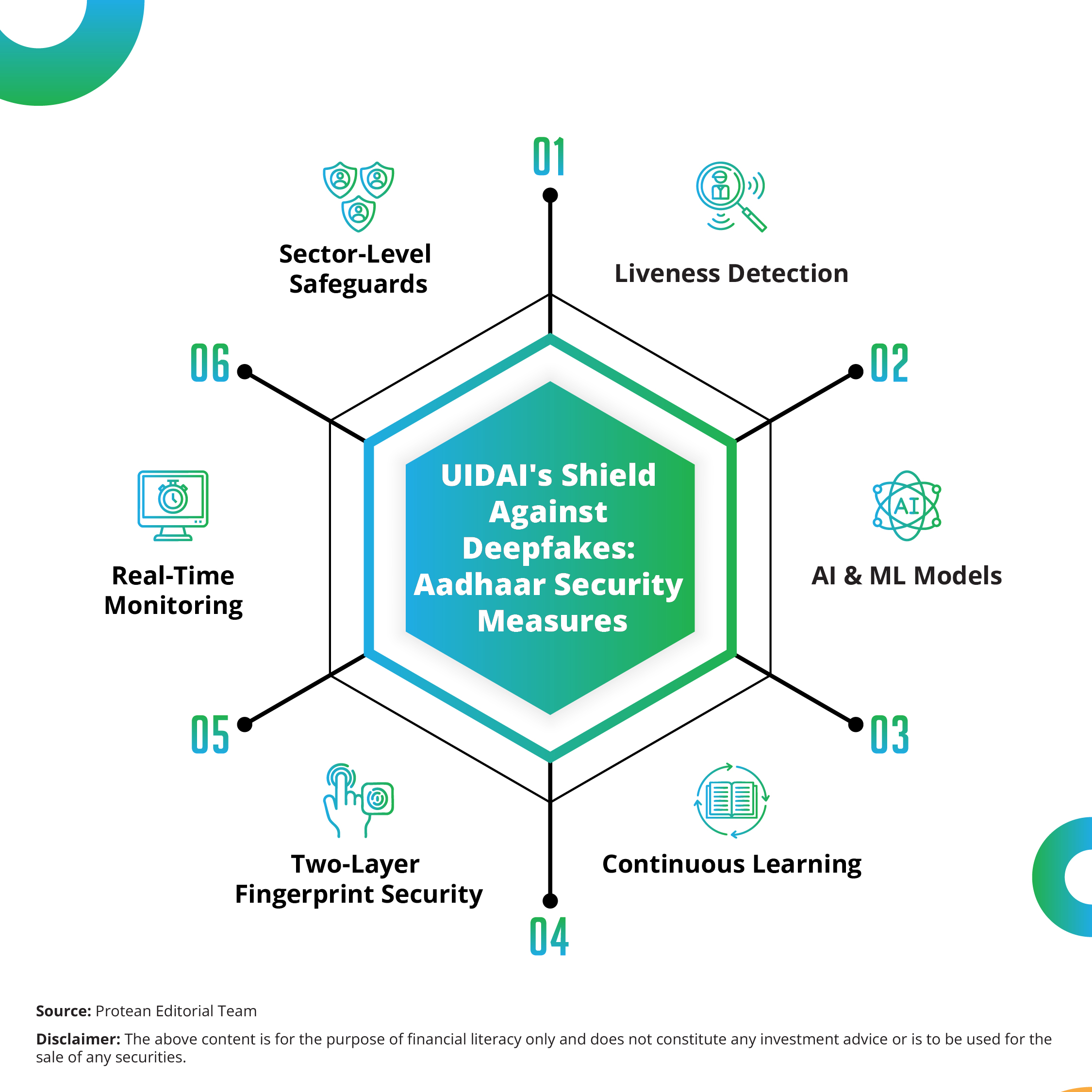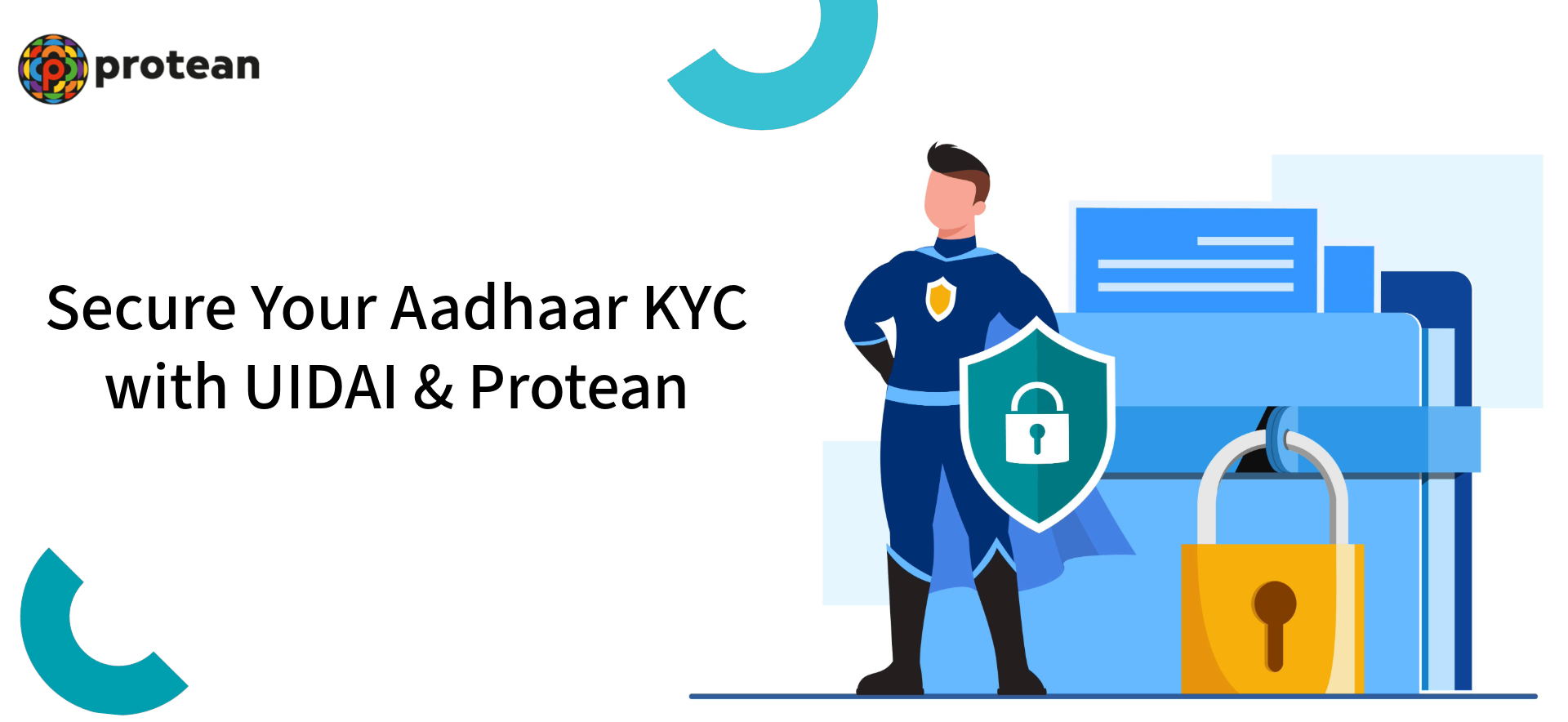| Aadhaar KYC and face authentication have become more prevalent, as a silent and sophisticated threat looms large i.e. the deepfake technology. |
India’s Unique Identification Authority of India (UIDAI) has stayed ahead of the curve, deploying a robust set of AI-driven safeguards, liveness detection, and real-time monitoring tools to protect Aadhaar biometric authentication from such manipulation.
Let us explore how deepfakes work, why they pose a challenge to digital identity, and how UIDAI along with trusted AUAs/KUAs like Protean eGov Technologies is securing Aadhaar authentication in the face of this emerging threat.
What is Deepfake Technology & Why It’s Dangerous
Deepfakes are AI-generated synthetic media, often images or videos, that can realistically replicate a person’s face or voice. These can be manipulated to make someone appear to say or do something they never did.
In the context of Aadhaar KYC, especially face authentication, deepfakes raise alarming possibilities:
- Impersonation during face scans to gain unauthorised access to banking services.
- Synthetic video uploads to bypass remote KYC checks in telecom or NBFC sectors.
- Misuse in government schemes to redirect benefits or subsidies.
| As per a report published on Mint, regulators and cybersecurity experts are increasingly concerned about deepfake-enabled fraud, particularly as digital onboarding becomes the norm across India. |
How Deepfakes Could Exploit Aadhaar KYC
The UIDAI face authentication uses biometric modalities including:
- Facial recognition
- Iris scans
- Fingerprints
Among these, facial recognition has seen widespread adoption due to its convenience, especially in contactless onboarding and rural service delivery.
However, facial data is also more exposed to visual manipulation than fingerprints or iris scans. Here’s how attackers create Deepfake aadhaar threats:
- Static deepfake images or pre-recorded synthetic videos used to trick the camera during facial authentication.
- Replay attacks during live video KYC where pre-crafted deepfake videos simulate real-time user presence.
- Spoofing attempts during self-service onboarding journeys in fintech, banking, or telecom apps.
These vectors make liveness detection Aadhaar authentication essential in defending against Aadhaar deepfake threats.

How UIDAI is Countering Deepfake Threats
To safeguard Aadhaar’s integrity, UIDAI has embedded several multi-layered security features into its authentication APIs. These are as follows:
- Aadhaar KYC with Liveness Detection prompts users to blink, smile, or turn their head, ensuring real-time presence and blocking static deepfake videos or images.
- AI & Machine learning models detect anomalies in facial patterns, inconsistent lighting, and unnatural movements.
- Continuous Learning of facial recognition models under Aadhaar continually learn from new threats, adapting to evolving Aadhaar spoofing prevention techniques and improving fraud detection over time.
- Two-Layer Fingerprint Security combines minutiae matching and fingerprint image validation with liveness checks thwarts spoofing through silicone molds or replica prints.
- Real-Time Transaction Monitoring performs risk-based analysis of face authentication patterns, flagging suspicious activity such as repeated attempts, geographical anomalies, or volume spikes.
- Sector-Level Safeguards mandates Aadhaar KYC verification safeguards across major sectors such as banking, pensions, welfare distribution, and telecom.
- Protection for the Vulnerable
Why Aadhaar is Still a Trusted Verification Layer
While passwords can be stolen and OTPs intercepted, biometrics remain inherently difficult to forge especially when protected by intelligent, real-time fraud controls. UIDAI’s facial authentication APIs are built atop:
- UIDAI-approved infrastructure
- Tamper-evident audit trails
- Layered security models combining biometrics, AI, and continuous monitoring
How Businesses Can Stay Compliant & Secure
Here’s how to stay protected against Deepfake threats:
- Integrate face authentication with liveness detection to prevent deepfake-based spoofing.
- Use AI-driven verification models that flag anomalies in facial behavior and visual inputs.
- Partner with a trusted AUA/KUA like Protean, for Aadhaar KYC services. Protean eGov is aligned with UIDAI’s vision for secure, real-time authentication.
Protean eGov Technologies’ Aadhaar-based onboarding tools are engineered for regulatory compliance, fraud prevention, and seamless integration into enterprise workflows.
Conclusion
Deepfake technology is a real and growing threat to digital identity systems, but Aadhaar isn’t defenseless. UIDAI’s layered defense strategy, featuring AI, ML, liveness detection, and real-time monitoring, has created a resilient ecosystem for Aadhaar biometric authentication.
Organisations seeking to future-proof their KYC processes and defend against identity fraud, can secure workflows with UIDAI-backed Aadhaar APIs.
| Protean can help your enterprise stay compliant, fraud-resistant, and digitally agile. Click on this link to learn more. |

